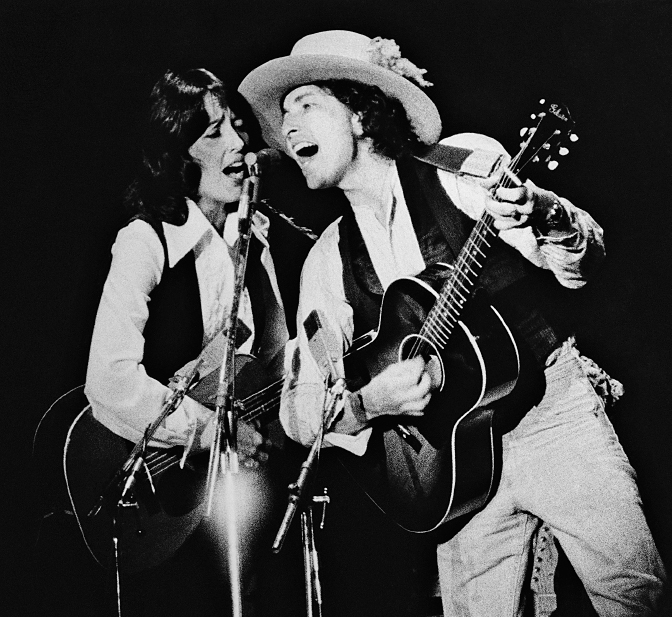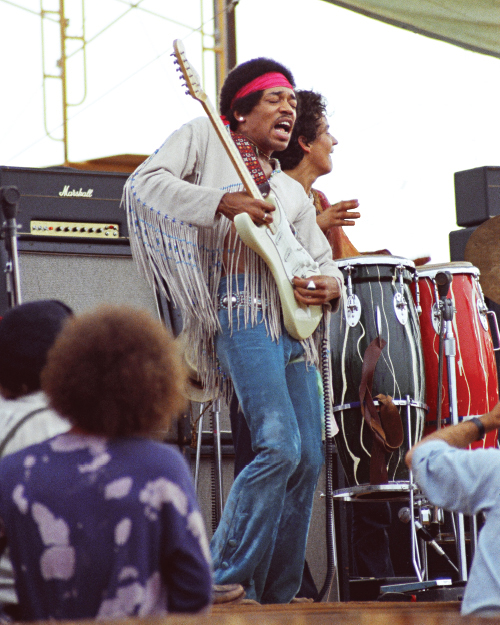American Counteroffensives
The irony of the British groups’ interest in American rhythm and blues is that their massive popularity chased dozens of American groups, especially black ones, off the charts and out of business. About the only American music that swam well during the highest tide of the British invasion was the surfing sound out of southern California, led by the Beach Boys (“I Get Around,” “Good Vibrations”).
Meanwhile another movement looking back to the hillbilly side of rock’s ancestry was gaining steam. Folk rock was led by Bob Dylan, whose evocative, often socially conscious lyrics (“Blowin’ in the Wind,” “The Times They Are A-Changin’”) rivaled his music in importance. Dylan’s resuscitation of white country and folk styles, building on “folkies” such as Woody Guthrie and Pete Seeger, had long-lasting consequences.
The most important of these was creating a place, at the edge of the rock tradition, for the singer-songwriter using acoustic accompaniment. Dylan and the folkies inspired later musicians as different as Bruce Springsteen and Elvis Costello. Women musicians in particular have found the singer-songwriter niche congenial. Their line extends from Joan Baez and Joni Mitchell in the 1960s to Joanna Newsom and Norah Jones today.

Joan Baez and Bob Dylan, 1975. AP Photo.
In the late 1960s a broad, mainly white stratum of American youth, espousing free love, free drugs, and ever-louder opposition to the U.S. war in Vietnam, embraced new styles. From San Francisco, a center of this counterculture, came acid rock, named after a mind-altering new drug, LSD, or “acid.” In the hands of groups like the Grateful Dead, the style joined long, jazzlike improvisations on electric guitar to hallucinatory images in the words; the Dead was the first great “jam band.”
Other guitar virtuosos embraced the new, improvisational style and linked it back to rhythm-and-blues guitar playing. The most famous of them were Jimi Hendrix, a rare black musician in the midst of psychedelic acid rock (“Purple Haze”), and the Latin-influenced Carlos Santana (“Black Magic Woman”). This powerful new style of guitar playing would infect groups on both sides of the Atlantic, such as the Who (creators of the rock opera Tommy), Cream (led by the blues-influenced guitarist Eric Clapton; “Sunshine of Your Love”), and Led Zeppelin (“Whole Lotta Love”). The guitar work of such groups formed the roots of heavy metal.

Jimi Hendrix performing at the Woodstock Festival, August 18, 1969. His psychedelic performance there, on solo electric guitar, of the “Star Spangled Banner” came to represent the festival and youth culture in general, inspiring many and outraging many more. Listen to it on YouTube. Dick Cunningham.

